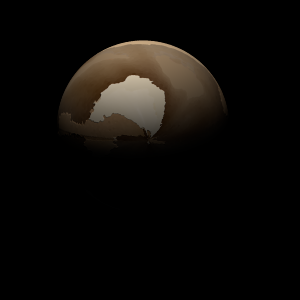|
|
Space Astro
|
Info for exoplanet "Rokdora"
| Scientific (actual) data |
|---|
| Name | Kepler-243 c |
| Planet status | Confirmed |
| Radius | 0.178 |
| Orbital period | 20.0262 |
| Semi major axis | 0.142 |
| Discovered | 2014 |
| Updated | 2021-02-05 |
| Tconj | 2454980 |
| Impact parameter | 0.77 |
| Publication | Announced on a website |
| Detection type | Primary Transit |
| Alternate names | 2MASS J19002651+4202022 c, K00857.02, KIC 6587280 c, KOI-857 c, KOI-857.02, WISE J190026.50+420202.2 c |
| Star name | Kepler-243 |
| Right ascension | 285.11° |
| Declination | 42.03° |
| Mag j | 13.622 |
| Mag h | 13.191 |
| Mag k | 13.064 |
| Star distance | 707.94 |
| Star metallicity | 0.241 |
| Star mass | 0.89 |
| Star radius | 0.84 |
| Star temperature | 5228 |
| Star alternate names | 2MASS J19002651+4202022, KIC 6587280, KOI-857, WISE J190026.50+420202.2 |
| Wikipedia article | Kepler-243 c |
Back
| |
| Fictional info (?) |
|---|
| Suggested name | Rokdora |
| Planet type | Planet |
| When viewed from Earth, this proximity to Kepler-243 means the planet can only be seen near the western or eastern horizon during the early evening or early morning.
The polar regions are constantly below 126°K (-147°C). |
| Atmosphere | Ammonium hydrosulfide (NH4SH) | 45% |
| 2H2O | 22% |
| Hydrogen peroxide | 21% |
| Molecular hydrogen | 9.6% |
| Hydrogen chloride | 2.2% |
| Neon | 0.067% |
| Carbon dioxide | 0.0063% |
| Hydrogen deuteride (HD) | 0% |
| Helium | 0% |
| Atmospheric pressure | 0.001 bar |
 |
| No known satellites |
| Google search for Rokdora |
|
Website by Joachim Michaelis
|
|
|
|